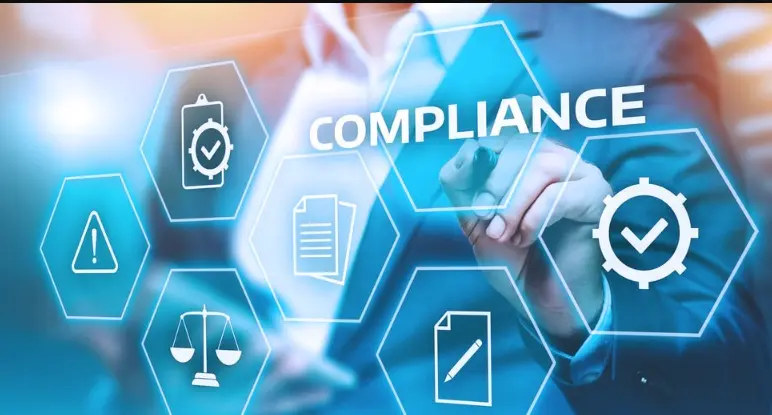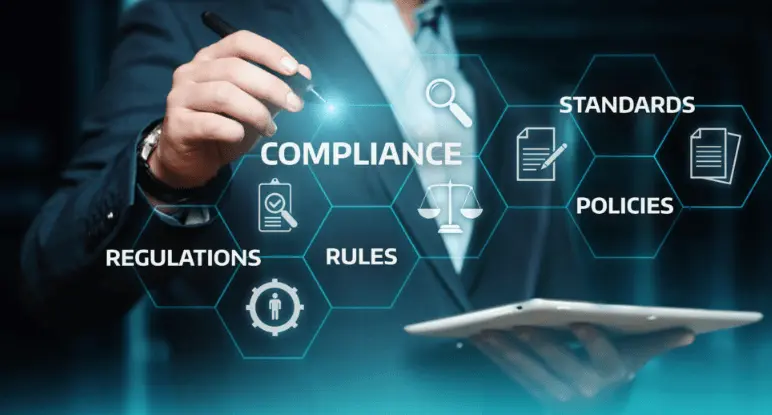Achieving CMMC Compliance, For contractors working with the U.S. Department of Defense (DoD), compliance with the Cybersecurity Maturity Model Certification (CMMC) framework is no longer an option but a necessity. The CMMC framework aims to enhance the cybersecurity posture of DoD contractors and protect sensitive government information. In this article, we will delve into the importance of CMMC compliance and provide guidance on how contractors can achieve it.
Achieving CMMC Compliance

The Cybersecurity Maturity Model Certification (CMMC) is a tiered cybersecurity framework developed by the DoD to ensure that contractors handling Controlled Unclassified Information (CUI) implement appropriate security measures. CMMC is a response to the growing threat of cyberattacks on the defense supply chain, where vulnerabilities in contractors’ systems could potentially jeopardize national security.
The framework consists of five maturity levels, with each level building upon the requirements of the previous ones. These levels are:
- Level 1 – Basic Cyber Hygiene: Focuses on safeguarding Federal Contract Information (FCI).
- Level 2 – Intermediate Cyber Hygiene: Expands security measures to protect Controlled Unclassified Information (CUI).
- Level 3 – Good Cyber Hygiene: Adds additional security practices to protect CUI.
- Level 4 – Proactive: Focuses on proactive cybersecurity practices.
- Level 5 – Advanced/Progressive: Ensures the most robust cybersecurity practices to protect against advanced threats.
Achieving CMMC
Complying with CMMC can be a complex process, but it is vital for contractors who want to continue doing business with the DoD. Here are the key steps to achieving CMMC compliance:
- Assess Your Current State : Begin by assessing your organization’s current cybersecurity practices and capabilities. Identify any gaps between your current state and the desired CMMC level. This assessment will serve as the foundation for your compliance efforts.
- . Educate Your Team : Ensure that your team understands the CMMC requirements and the implications of non-compliance. Cybersecurity awareness and training are critical components of compliance.
- Plan and Document : Develop a comprehensive plan for achieving CMMC compliance. Document your processes, procedures, and security controls. This documentation will be essential for audits and assessments.
- Implement Security Controls : Based on your assessment, implement the necessary security controls and practices required for your target CMMC level. This may include measures such as access control, encryption, and incident response procedures.
- Continuous Monitoring : Establish continuous monitoring practices to ensure that your cybersecurity measures are consistently effective. Regularly assess and update your security controls to adapt to evolving threats.
- Third-Party Assessment Organization (C3PAO) : Engage a certified C3PAO to conduct an independent assessment of your compliance. This assessment will determine whether your organization meets the CMMC requirements.
- Corrective Actions : Address any deficiencies or vulnerabilities identified during the assessment. Implement corrective actions promptly to improve your cybersecurity posture.
- Submit Your Certification : Once your organization has achieved the desired CMMC level, submit your certification to the DoD. This certification is essential for bidding on DoD contracts that require CMMC compliance.
Challenges and Benefits

Achieving CMMC compliance can be challenging and resource-intensive, but the benefits are substantial. Compliance not only allows you to continue working with the DoD but also enhances your cybersecurity resilience, which is crucial in today’s threat landscape. Some of the benefits include:
- Competitive Advantage : CMMC compliance can give your organization a competitive advantage in the defense contracting industry, as it demonstrates a commitment to cybersecurity.
- Protecting Sensitive Information : Compliance helps protect sensitive government information and ensures the security of the defense supply chain.
- Reduced Risk : Implementing CMMC controls reduces the risk of data breaches, cyberattacks,
and associated legal and financial consequences.
- Improved Reputation : Being CMMC compliant enhances your reputation as a reliable and secure contractor,
Also which can lead to more business opportunities.
For DoD contractors, achieving CMMC compliance is not just a regulatory requirement but a strategic imperative. It enhances cybersecurity, protects sensitive information, and ensures continued eligibility for DoD contracts.
Also While the process may be challenging, the benefits of compliance far outweigh the efforts involved. By following the steps outlined in this article and making cybersecurity a priority, contractors can navigate the path to CMMC compliance successfully and contribute to national security in the process.
Maintaining CMMC Compliance
Achieving CMMC compliance is a significant accomplishment, but it’s essential to understand that compliance is an ongoing commitment. To maintain your compliance and continue reaping the benefits, consider the following key practices:
- Regular Audits and Assessments : Conduct regular internal audits and assessments to ensure that your organization continues to meet the CMMC requirements. This proactive approach helps identify and address any issues before they become compliance gaps.
- Stay Informed : Stay updated on changes and updates to the CMMC framework.
Also The cybersecurity landscape is constantly evolving, and the DoD may revise requirements or introduce new security controls. Being aware of these changes and adapting accordingly is crucial.
- Employee Training : Continuously educate and train your employees on cybersecurity best practices.
Human error remains one of the leading causes of security breaches, so a well-informed and security-conscious workforce is essential.
- Also Incident Response Planning : Develop and regularly update an incident response plan. In the event of a security incident or breach, having a well-defined plan can minimize damage and downtime while ensuring compliance with reporting requirements.
- Vendor Management : If your organization relies on third-party vendors or subcontractors, ensure that they also meet CMMC requirements. The security of your supply chain is as critical as your internal cybersecurity measures.
- Also Documentation and Records : Maintain accurate records of your cybersecurity processes, assessments,
and compliance activities. This documentation serves as evidence of your commitment to compliance and can simplify future audits.
- Security Culture : Foster a culture of cybersecurity within your organization. Encourage employees to report potential security threats and promote a shared responsibility for maintaining
Non-Compliance Consequences

It’s important to recognize that non-compliance with CMMC can have significant consequences for DoD contractors.
Some potential ramifications include:
- Loss of Contracts : Non-compliant contractors may lose existing contracts and be ineligible to bid on new ones that require CMMC compliance.
- Also Financial Penalties : The DoD may impose financial penalties on non-compliant contractors,
which can be financially burdensome.
- Reputation Damage : Non-compliance can harm your organization’s reputation, making it challenging to secure contracts with other government agencies or private-sector clients.
- Also Legal Consequences : In severe cases of non-compliance that lead to data breaches or security incidents, legal actions and liabilities may arise.
Achieving and maintaining CMMC compliance is a critical endeavor for DoD contractors. It not only ensures your eligibility to work with the Department of Defense but also enhances your cybersecurity posture, protects sensitive information, and ultimately contributes to national security. Compliance is an ongoing commitment that requires dedication, resources, and a proactive approach to cybersecurity. Also By embracing CMMC as a strategic imperative, your organization can navigate the complex landscape of cybersecurity requirements and continue to thrive in the defense contracting industry. Remember, compliance is not just a box to check; it’s a journey toward a more secure future
The Future of CMMC
As the threat landscape continues to evolve, so does the CMMC framework. The Department of Defense is committed to enhancing the cybersecurity resilience of its supply chain, and CMMC is a key component of that strategy.
Also Contractors should anticipate further refinements and updates to the framework in response to emerging threats and lessons learned from implementation.
Here are some potential developments to watch for in the future:
- Streamlined Processes : The DoD is likely to refine and streamline the CMMC certification process to make it more efficient and accessible for contractors of all sizes. This may include providing clearer guidance and support for compliance efforts.
- Also International Adoption : The principles of CMMC may become more widely adopted internationally as other governments and organizations recognize the importance of supply chain cybersecurity. This could open up new business opportunities for compliant contractors on a global scale.
- Advanced Threat Mitigation : As cyber threats become increasingly sophisticated, CMMC requirements at higher maturity levels (Levels 4 and 5) may evolve to address emerging threats. Contractors should stay vigilant and adapt their cybersecurity practices accordingly.
- Also Continuous Improvement : The DoD is likely to encourage a culture of continuous improvement in cybersecurity.
This means that contractors should not view compliance as a one-time goal but as an ongoing commitment to evolving their security measures.
Read more: Dell PowerEdge vs. HPE ProLiant: Battle of the Server Giants
The Significance of Cybersecurity Maturity Model Certification (CMMC) Compliance for Department of Defense Contractors

In an era of rapidly evolving cyber threats, achieving and maintaining CMMC compliance is a vital step for Department of Defense contractors. Compliance not only allows you to participate in defense contracts but also elevates your organization’s cybersecurity posture and helps safeguard national security interests.
Embrace CMMC as an opportunity to strengthen your cybersecurity practices,
protect sensitive information, and enhance your reputation as a trusted partner for the DoD. Remember that compliance is not a static achievement; it’s an ongoing journey that requires dedication, vigilance, and a commitment to staying ahead of emerging threats.
By prioritizing cybersecurity, fostering a culture of compliance, and staying informed about future developments in the CMMC framework, contractors can position themselves for success in an increasingly digital and interconnected world.
The path to CMMC compliance may be challenging, but the rewards in terms of security and business opportunities are well worth the effort.

